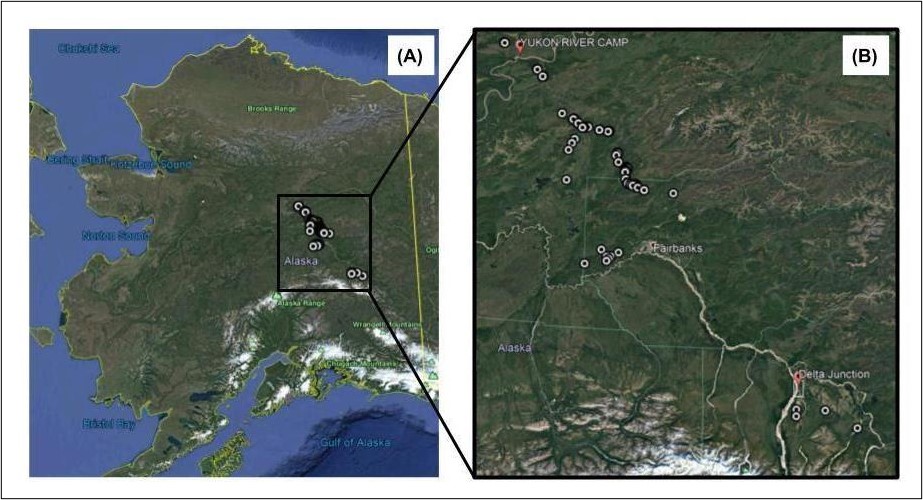The ORNL DAAC recently released a new Arctic-Boreal Vulnerability Experiment (ABoVE) dataset by Fiore, N., et al. (2021):
NDVI, Species Cover, and LAI, Burned and Unburned sites, Interior Alaska, 2017-2018
This dataset provides leaf area index (LAI), tree species and canopy cover, normalized difference vegetation index (NDVI), and NDVI trends for boreal forests in interior Alaska, U.S. These data were collected to investigate NDVI trends with forest structure and composition as influenced by disturbance and succession. The data are from 102 sites surveyed in 2017 and 2018 and include locations with and without a fire since 1940. A time series of NDVI was developed from Landsat (1999-2018) to measure NDVI trends. The field data cover the period 2017-08-29 to 2018-08-20. The surveyed forest stands spanned a distance of over 425 km across interior Alaska. The sites were selected before visiting the field to include locations with and without a fire since 1940. Recently burned sites were selected to span a range of years since fire, while sites without a recent fire were selected to include a range of Landsat NDVI trends. For each year, the median NDVI during the growing season was calculated. Then, a simple linear regression trend was calculated for years 1999-2018.
The ABoVE is a NASA Terrestrial Ecology Program field campaign being conducted in Alaska and western Canada, for 8 to 10 years, starting in 2015. Research for ABoVE links field-based, process-level studies with geospatial data products derived from airborne and satellite sensors, providing a foundation for improving the analysis, and modeling capabilities needed to understand and predict ecosystem responses to, and societal implications of, climate change in the Arctic and Boreal regions.
Additional data from ABoVE and other relevant links can be found on the ORNL DAAC's ABoVE Project Page.
Citation: Fiore, N., S. Pedron, M. Tayo, C.I. Czimczik, and M.L. Goulden. 2021. NDVI, Species Cover, and LAI, Burned and Unburned sites, Interior Alaska, 2017-2018. ORNL DAAC, Oak Ridge, Tennessee, USA. https://doi.org/10.3334/ORNLDAAC/1797

